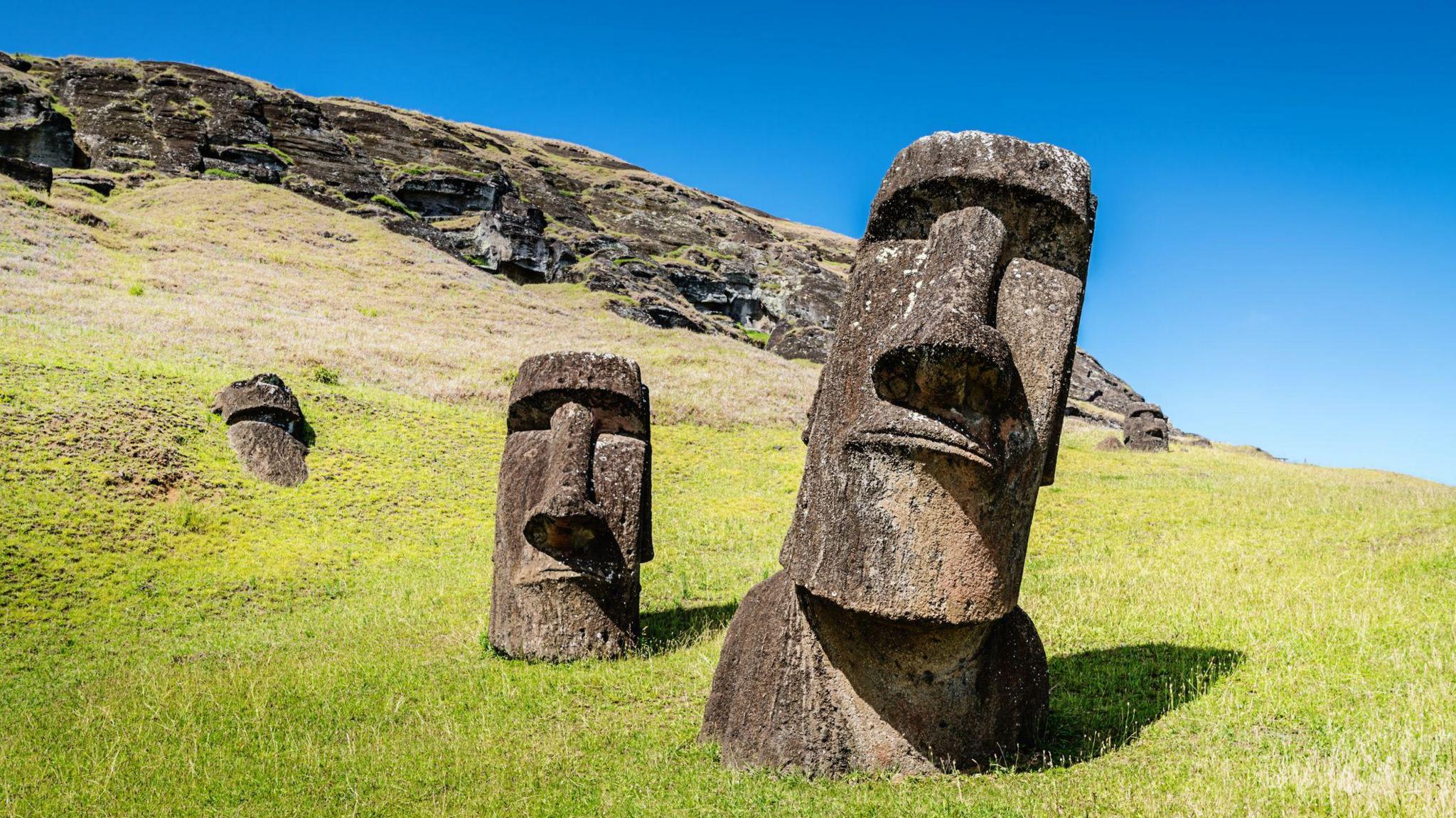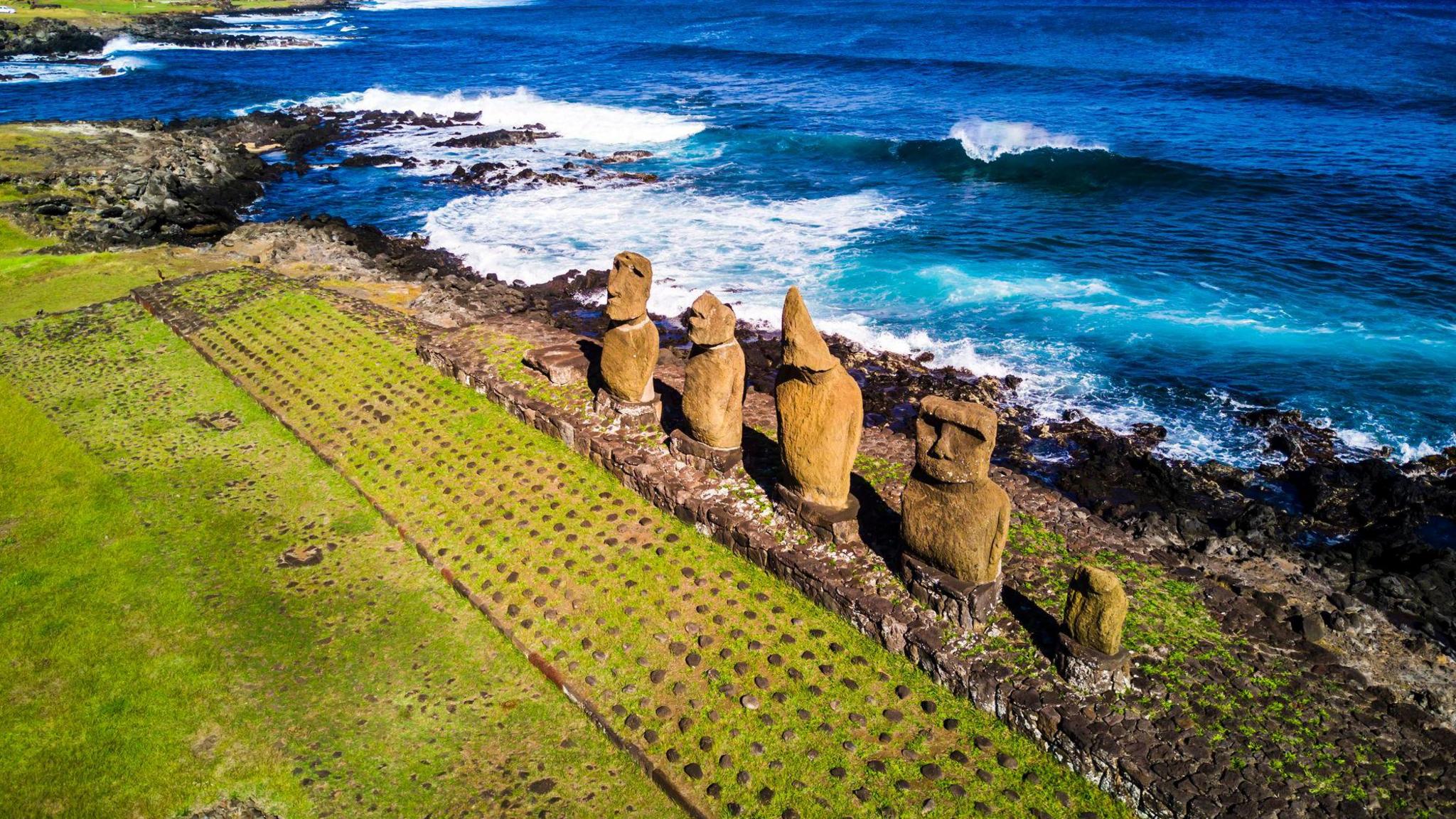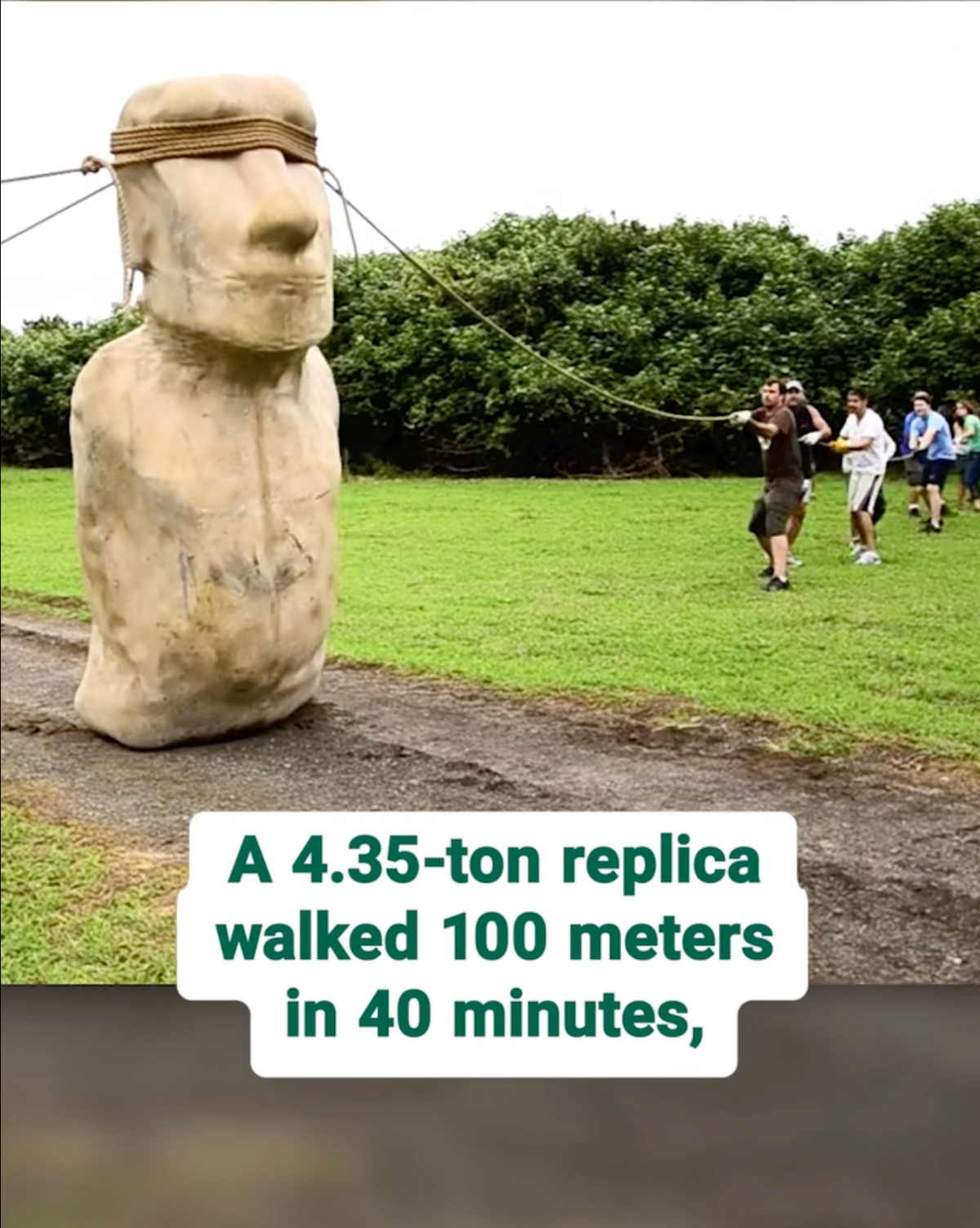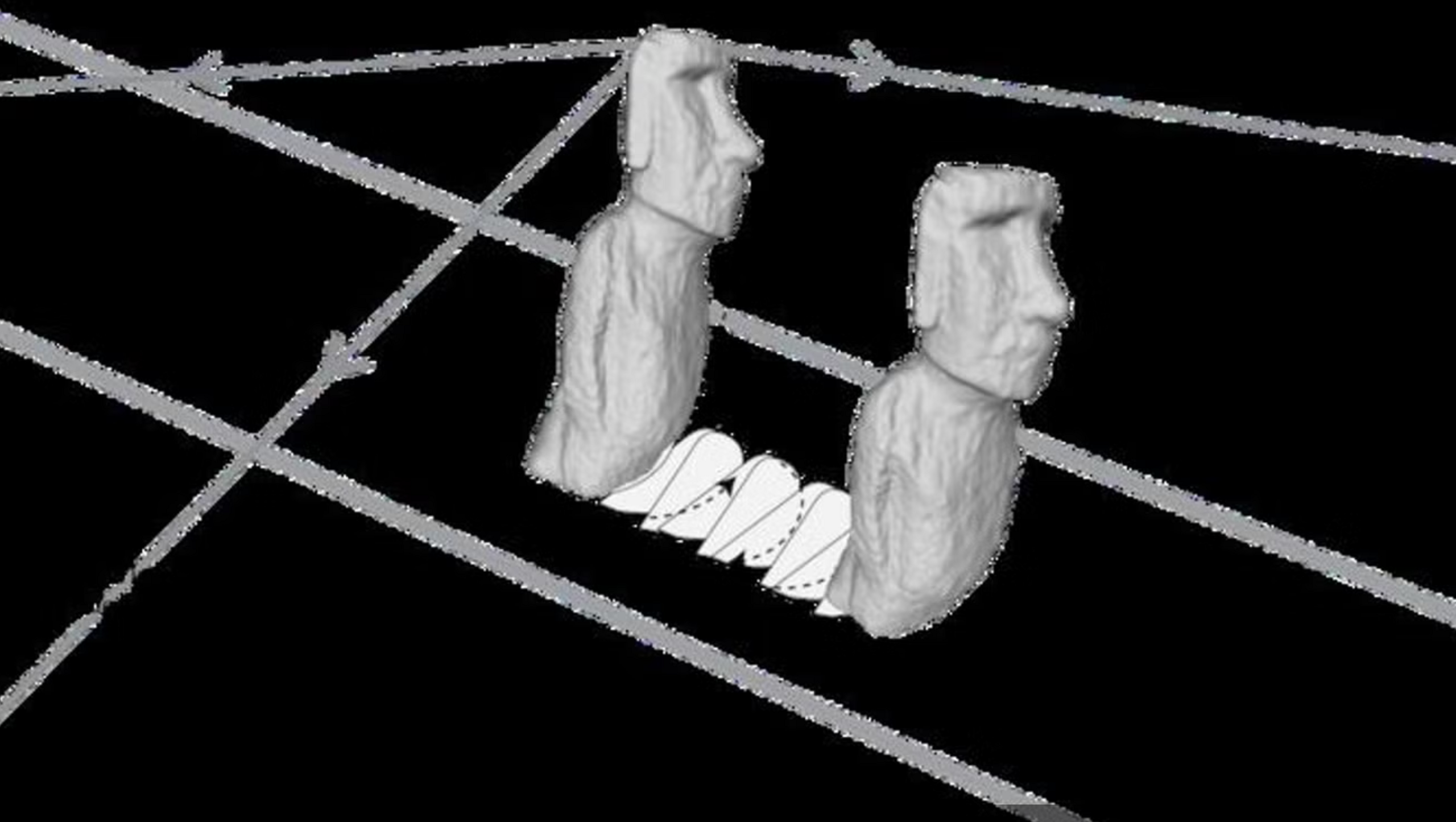These giant Easter Island heads 'walked' into place

- Published
For many years, people have wondered how the giant stone statues on Easter Island were moved.
These statues, famous for their giant heads and serious faces are called Moai (pronounced mo-eye), and can be as tall and as heavy as a double-decker bus.
But now, scientists from Binghamton University in the US state of New York, think they've solved the mystery...
- Published7 October 2022
- Published29 November 2018
New research suggests that the statues were walked to their places using ropes, clever planning, and teamwork by the island's people - the Rapa Nui.
A new study published in the Journal of Archaeological Science explains how the Rapa Nui used a special method to move the Moai.
They tied ropes around the statues and used people pulling on each side to make the statues shift from side to side and 'walk' in a zig-zag motion.
This means the statues didn't lie down and get dragged, as some experts had previously thought.
"It shows that the Rapa Nui people were incredibly smart. They figured this out," said Dr Carl Lipo, one of the archaeologist who studied the statues.

Easter Island is one of the most remote places where people live on Earth.
It's located in the south-eastern Pacific Ocean, about 3,500 km (2,200 miles) away from the Chile in South America.
Easter Island got its name because it was discovered by a Dutch explorer named Admiral Jacob Roggeveen on Easter Sunday.
The Moai statues were carved from rock cut from a quarry on the island between the years 1250 and 1500.
The Rapa Nui moved hundreds of these statues to stone platforms, which were placed around the island's edges.
For years, no one was sure how they moved the statues. Some thought the statues were dragged lying down on wooden sleds.
But that would have taken a huge number of people, and there's little evidence that trees were cut down to do it.

The scientists put their theory to the test with their own replica Easter island statue
To put their 'walking' theory to the test, the scientists built a full-sized copy of a Moai statue.
With only 18 people and some ropes, they managed to move the heavy statue 100 metres in just 40 minutes!
"Once you get it moving, it isn't hard at all – people are pulling with one arm," said Dr Lipo. "It moves really quickly."

A diagram shows the statues 'walking' technique whereby moai were shifted from side to side along roads
Ancient roads discovered on Easter Island may have helped too. These roads were about 4.5 metres wide and shaped like a shallow bowl.
Scientists say the shape would help keep the rocking statues steady and stop them from tipping over.
As Dr Lipo explained, "Every time they're moving a statue, it looks like they're making a road.
"The road is part of moving the statue," he added.
